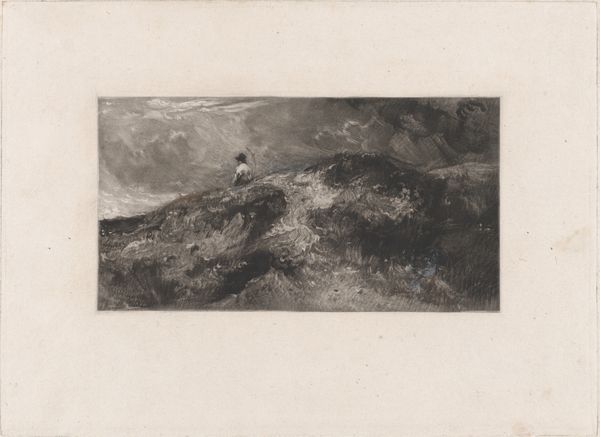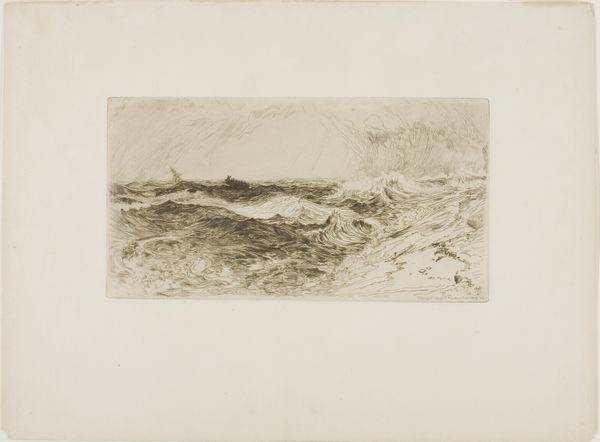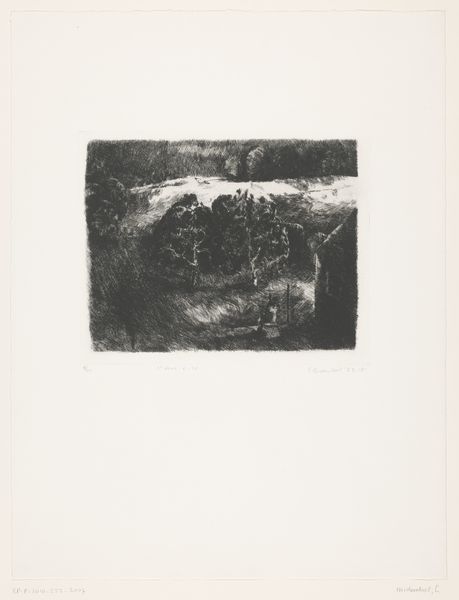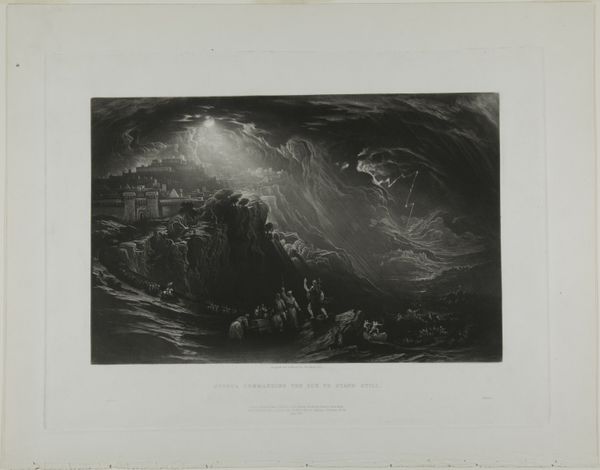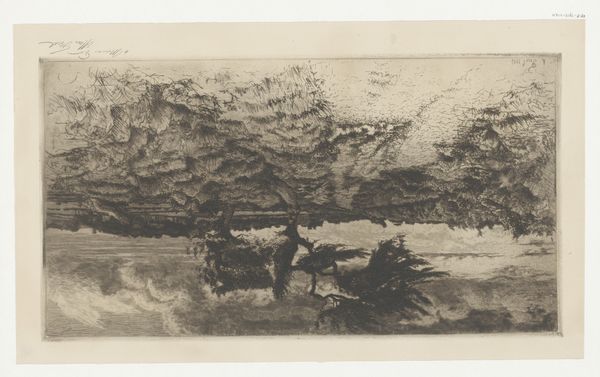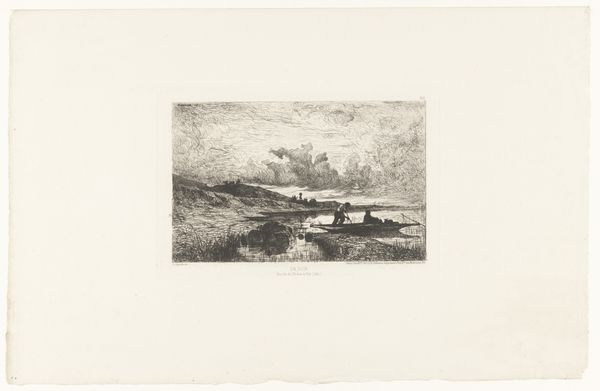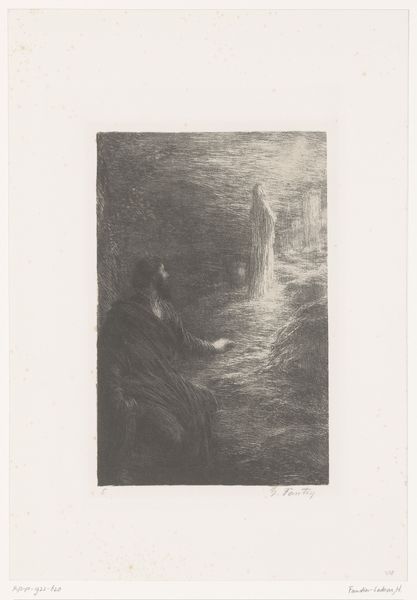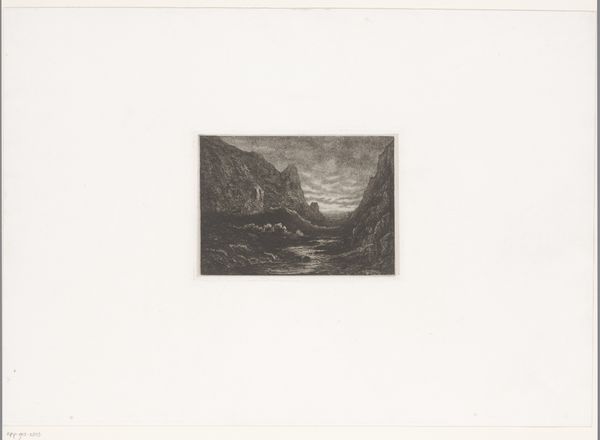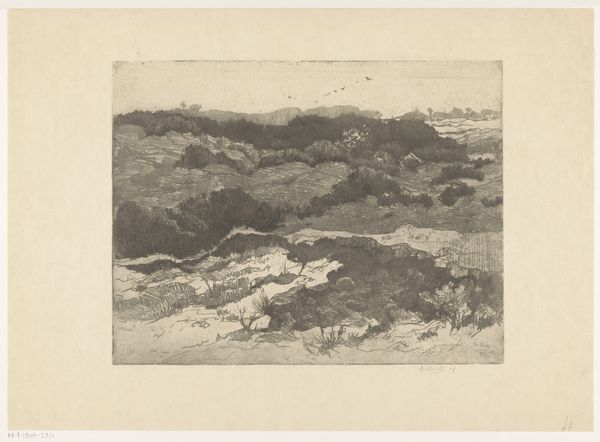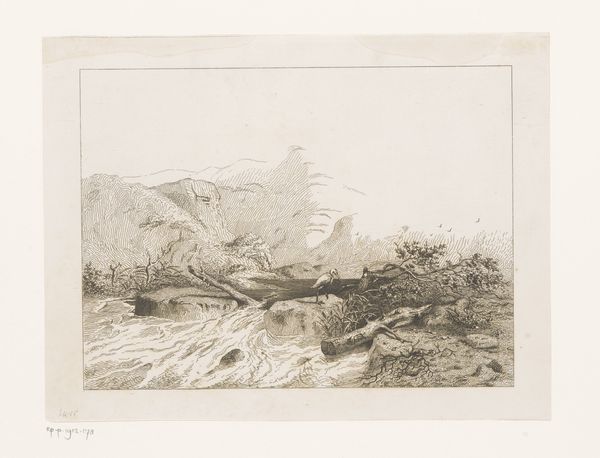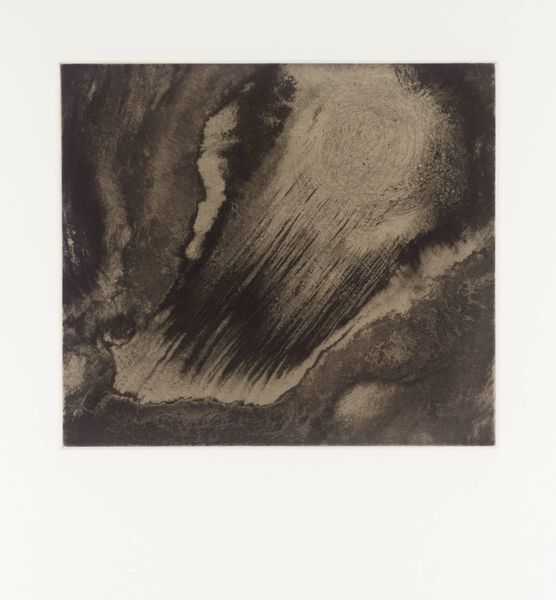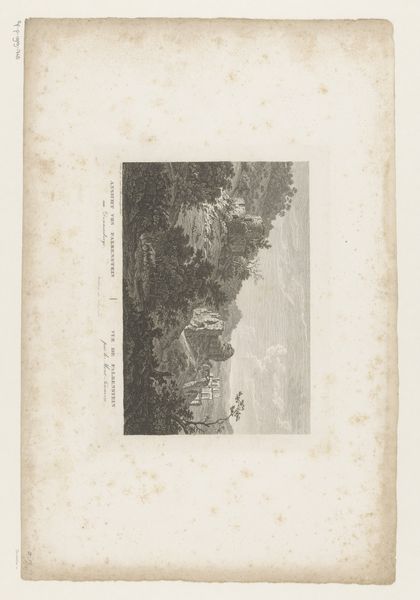
drawing, print, etching, engraving
#
pencil drawn
#
medal
#
drawing
# print
#
etching
#
human-figures
#
landscape
#
romanticism
#
engraving
Dimensions: Image: 3 9/16 × 6 1/16 in. (9 × 15.4 cm) Plate: 6 9/16 × 9 in. (16.7 × 22.9 cm) Sheet: 11 11/16 × 14 1/8 in. (29.7 × 35.9 cm)
Copyright: Public Domain
This print, Hampstead Heath, was made by David Lucas in the 19th century, using a technique called mezzotint. This is an intaglio process, meaning that the image is incised into a metal plate, which is then inked and printed. With mezzotint, the artist creates tone by roughening the plate evenly with a tool called a rocker, which has a curved, serrated edge. If printed at this stage, the plate would produce a solid black. The artist then gradually smooths areas of the plate to create lighter tones. Lucas was a master of this laborious technique, and the velvety blacks and subtle gradations of tone in this print are testament to his skill. Mezzotint was often used to reproduce paintings, and Lucas worked extensively with the British artist John Constable. Prints like this one were relatively affordable, allowing a wider audience to experience Constable's art. In this way, Lucas's craft played a vital role in shaping popular taste and the art market of his time. By understanding the process behind this print, we can appreciate the skill involved in its making, and its place in the wider world of art and commerce.
Comments
No comments
Be the first to comment and join the conversation on the ultimate creative platform.
